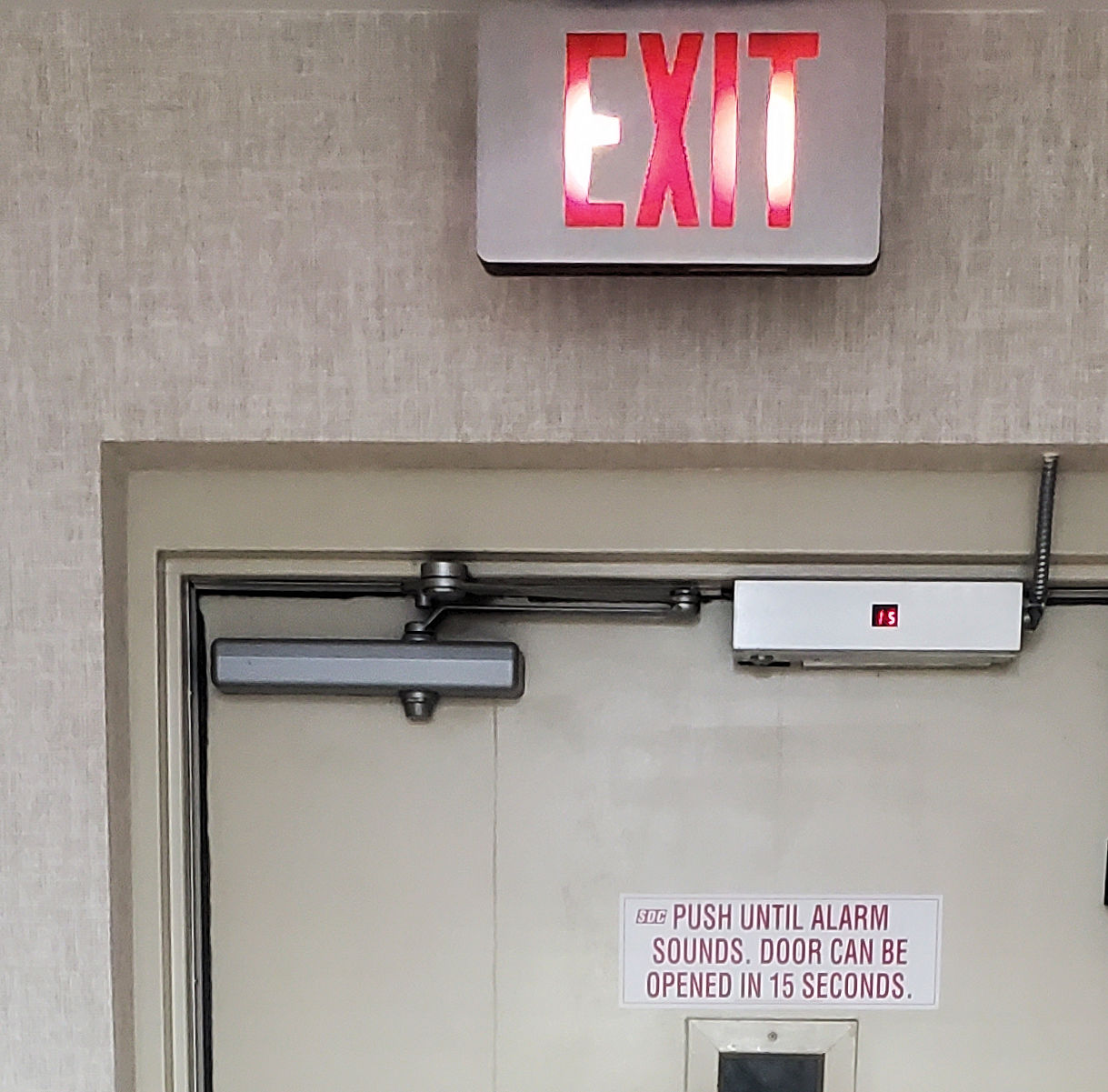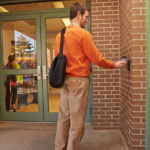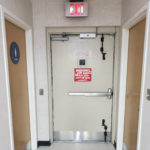 Last week I posted a photo that was submitted by Bruce Gill of North Central Supply as part of the 3,000-post celebration, and the photo raised a few Quick Questions about the mag-lock:
Last week I posted a photo that was submitted by Bruce Gill of North Central Supply as part of the 3,000-post celebration, and the photo raised a few Quick Questions about the mag-lock:
Why doesn’t this electromagnetic lock have a sensor and auxiliary push button?
How does this mag-lock release for egress?
There are two sections of the model codes that are typically used for doors with electromagnetic locks. One addresses electrified locks released by a sensor that detects an approaching occupant, and the other covers electrified locks released by a switch in the door-mounted hardware (typically a request-to-exit/RX switch in a panic device, touch-sense bar, or lever handle). These sections are not limited to electromagnetic locks, however, mag-locks are the type of electrified lock that is typically released by either a sensor or an RX switch.
A mag-lock released by a sensor would require an auxiliary push button beside the door as a back-up release method to the sensor that would detect an occupant approaching the door on the egress side. In addition, a sensor-release lock must also unlock upon fire alarm/sprinkler activation (if present), and upon power failure.
When a mag-lock is released by a switch in the door-mounted hardware, the auxiliary push button and fire alarm/sprinkler release are not required by the model codes. The lock is released by the switch in the door-mounted hardware, and is also required to unlock upon loss of power.
The mag-lock in the photo is not released by a sensor or by a switch in the door-mounted hardware; it is not required to comply with the requirements of either of these code sections. This lock is a delayed egress lock, and there is a separate section in the model codes that addresses these locks. In a nutshell, under normal operation the lock must release 15 seconds after an attempt to exit is made – when a force of up to 15 pounds is applied for up to 3 seconds. The lock must release immediately to allow egress (without delay) upon fire alarm/sprinkler activation, and upon loss of power. (Consult the adopted code for additional requirements.)
So how does a delayed egress mag-lock work? There are two activation methods that are commonly used. Some delayed egress mag-locks are actuated by a switch in the door hardware – pushing the touchpad of a panic hardware or turning a lever sends a signal to begin the 15-second timer. The more common type of delayed egress mag-lock incorporates a switch in the mag-lock itself, which senses the slight movement of the door when someone attempts to exit – this begins the 15-second timer.
One more question about delayed egress locks comes up fairly often:
Can a delayed egress lock be used on an inswinging door?
The assumption is often made that all egress doors are required to be outswinging, but in most occupancy types, egress doors can be inswinging if they are serving a calculated occupant load of less than 50 people. Delayed egress locks are allowed on these inswinging egress doors. This has been clarified in the model codes, where two options for signage are now referenced: PUSH UNTIL ALARM SOUNDS, DOOR CAN BE OPENED IN 15 SECONDS (for outswinging doors), or PULL UNTIL ALARM SOUNDS, DOOR CAN BE OPENED IN 15 SECONDS (for inswinging doors).
Any other Quick Questions? 🙂
You need to login or register to bookmark/favorite this content.









which side of the inswing door is used to calculate the occupant load?
The area/ room the exit serves??
Hi Jim –
It would be the egress side, which is often the push side but may be the pull side if the occupant load is less than 50 people.
– Lori
I have a question can you have more than one delayed egress in a path of egress
Hi Jerry –
There is an article here that should help you: https://idighardware.com/2021/10/locksmith-ledger-model-code-comparison-delayed-egress-locking-systems/
Here is the section on this particular question:
I-Codes: For most use groups, only one delayed egress lock is allowed per egress path. This has changed from past editions of the I-Codes, where a building occupant could only encounter one delayed egress lock before entering an exit. In Group I – institutional occupancies, such as hospitals, nursing homes, and day care facilities, the I-Codes currently allow two doors with delayed egress locks per egress path, with a maximum combined delay of 30 seconds. In Group I-1, Condition 1 and Group I-4, the exception permitting two doors with delayed egress locks mandates that the building is equipped throughout with a sprinkler system.
NFPA: For most occupancy classifications, the NFPA codes do not restrict the number of delayed egress locks per egress path. Only in lodging or rooming houses does the Life Safety Code limit delayed egress locks to one device per escape path.
– Lori